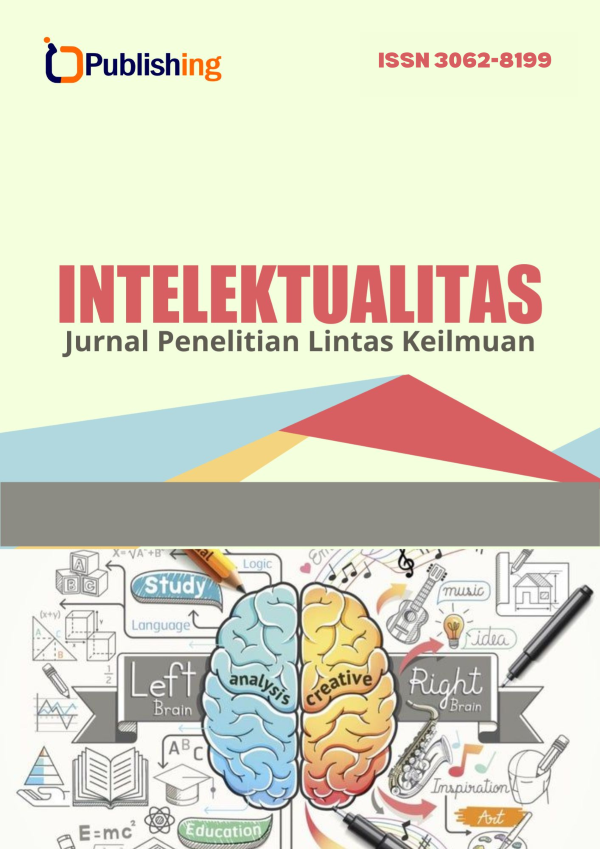Results Aimed at Increasing the Efficiency of Information and Communication Technologies in the Process of Teaching Chemistry
DOI:
https://doi.org/10.47134/intelektualitas.v2i1.4218Keywords:
ICT integration, chemistry education, student engagement, virtual labs, digital learning, teacher training, learning outcomesAbstract
This study aims to evaluate the effectiveness of Information and Communication Technologies (ICT) in enhancing student learning outcomes in chemistry education. Through a mixed-methods approach combining experimental design and qualitative feedback, a range of ICT tools—such as virtual laboratories, interactive simulations, and mobile learning applications—were implemented in classroom settings. The intervention involved pre- and post-testing, as well as surveys and focus group discussions to assess engagement, understanding, and attitudes. Results indicate a statistically significant improvement in students’ academic performance and engagement in the ICT-enhanced group compared to the control group. Students reported higher motivation and better conceptual clarity, particularly in abstract topics. However, challenges such as limited digital access, teacher training gaps, and technical glitches were identified. This research reinforces the transformative potential of ICT in chemistry education while highlighting the need for supportive infrastructure and professional development to ensure sustainable implementation.
References
Ali, M., Ullah, H., & Zahid, M. (2021). Impact of virtual lab simulation on student learning in chemistry. Journal of Educational Technology & Online Learning, 4(2), 85–94. https://doi.org/10.58250/jethol.v4i2.152
Andreev, V. P., & Smirnova, E. A. (2019). Use of information and communication technologies in teaching chemistry: theoretical and practical aspects. Bulletin of pedagogy and psychology, 4(27), 45-53.
Banerjee, A., & Mishra, S. (2023). Role of ICT in higher education: Opportunities and challenges. Education and Information Technologies, 28(3), 2541–2563. https://doi.org/10.1007/s10639-023-11692-w
Chen, Y., & Tsai, C. C. (2021). Students’ motivation and learning outcomes in mobile AR-based chemistry learning. Computers & Education, 161, 104084. https://doi.org/10.1016/j.compedu.2020.104084
Darmawan, D. (2022). Implementation of augmented reality to support chemistry instruction. International Journal of Interactive Mobile Technologies, 16(1), 49–58. https://doi.org/10.3991/ijim.v16i01.27115
de Jong, T., Linn, M. C., & Zacharia, Z. C. (2013). Physical and virtual laboratories in science and engineering education. Science, 340(6130), 305–308. https://doi.org/10.1126/science.1230579
Fedorova, E. A. (2018). The influence of computer simulations on the assimilation of chemical concepts at school. Pedagogical education in Russia, 3(43), 112-118.
Goh, T. T., & Sandhu, M. (2020). A framework for ICT adoption in STEM education: Evidence from chemistry classrooms. Journal of Research on Technology in Education, 52(4), 420–434. https://doi.org/10.1080/15391523.2020.1809032
Guler, N., & Tatar, N. (2019). Effects of using virtual laboratory on students’ achievement and attitude in chemistry: A meta-analysis. Education and Information Technologies, 24(1), 563–590. https://doi.org/10.1007/s10639-018-9783-6
Halim, L., & Alkharusi, H. (2020). Effects of mobile learning applications on chemistry students’ motivation and achievement. International Journal of Emerging Technologies in Learning, 15(7), 40–55. https://doi.org/10.3991/ijet.v15i07.12765
Hassan, M. A., & Farooq, M. U. (2023). Mobile learning strategies to enhance chemistry comprehension among high school learners. Journal of Educational Multimedia and Hypermedia, 32(1), 21–38.
Ivanova, T. N. (2018). Virtual laboratories in the chemistry teaching system: possibilities and prospects. Chemistry at school, 3, 15-21.
Jang, S., & Lee, H. (2022). Investigating the impact of online virtual chemistry experiments on students’ cognitive load and motivation. Journal of Science Education and Technology, 31(2), 155–169. https://doi.org/10.1007/s10956-021-09915-2
Kozlov, A. V. (2020). Application of interactive technologies in the chemistry educational process. Modern education: theory and practice, 12(2), 102-109.
Kumar, A., & Jain, V. (2021). Effect of ICT-based flipped classrooms on academic performance in chemistry. Smart Learning Environments, 8(1), 1–12. https://doi.org/10.1186/s40561-021-00163-1
Lebedeva, M. S. (2017). Increasing students' motivation in studying chemistry using information technologies. Pedagogics Issues, 9, 87-92.
Li, H., & Zhang, W. (2022). Evaluating the effectiveness of mobile applications for chemical equation balancing. Education and Information Technologies, 27(5), 6211–6233. https://doi.org/10.1007/s10639-021-10719-0
Mulyani, S., & Widodo, W. (2023). Blended learning model based on ICT for chemistry: Effects on students’ achievement and digital skills. Journal of Chemical Education, 100(3), 654–662. https://doi.org/10.1021/acs.jchemed.2c00428
Nasution, M. K., & Handayani, P. (2020). Using virtual laboratory simulations to teach reaction kinetics. Jurnal Pendidikan IPA Indonesia, 9(4), 479–485. https://doi.org/10.15294/jpii.v9i4.25287
Nikolaev, D. V., & Orlova, N. P. (2019). Information technologies in educational activities in chemistry: experience and prospects. Scientific and methodological journal, 6, 58-64.
Okonkwo, C. W., & Yusof, Y. (2020). A review of the integration of ICT in science education in Africa. Journal of Science Education and Technology, 29(6), 688–704. https://doi.org/10.1007/s10956-020-09864-w
Petrov, S. M. (2021). Development and implementation of mobile applications for teaching chemistry at the university. Educational technologies and society, 24(1), 67-75.
Prasetyo, A., & Riyadi, M. (2021). Enhancing learning outcomes through 3D animation in chemistry learning. Jurnal Pendidikan Sains Indonesia, 9(1), 12–20. https://doi.org/10.24815/jpsi.v9i1.18645
Roy, R., & Dhar, S. (2021). ICT-enabled learning environment for teaching periodic trends: A case study. Education and Information Technologies, 26(4), 4879–4893. https://doi.org/10.1007/s10639-021-10555-2
Rutten, N., van Joolingen, W. R., & van der Veen, J. T. (2012). The learning effects of computer simulations in science education: A meta-analysis. Computers & Education, 58(1), 136–153. https://doi.org/10.1016/j.compedu.2011.07.009
Sobirovich, T. B. (2023). Basic Criteria for Building the Third Renaissance in Uzbekistan. Asian Journal of Applied Science and Technology (AJAST), 7(1), 149-157.
Taber, K. S. (2018). Using ICT to support chemistry education. Chemistry Education Research and Practice, 19(2), 334–346. https://doi.org/10.1039/C7RP00125C
Wu, H.-K., Lee, S. W.-Y., Chang, H.-Y., & Liang, J.-C. (2013). Current status, opportunities and challenges of augmented reality in education. Computers & Education, 62, 41–49. https://doi.org/10.1016/j.compedu.2012.10.024
Wu, X., & Hou, H. (2023). The effect of gamification and simulations on students’ engagement and performance in chemistry. Interactive Learning Environments, 1–15. https://doi.org/10.1080/10494820.2023.2188447











